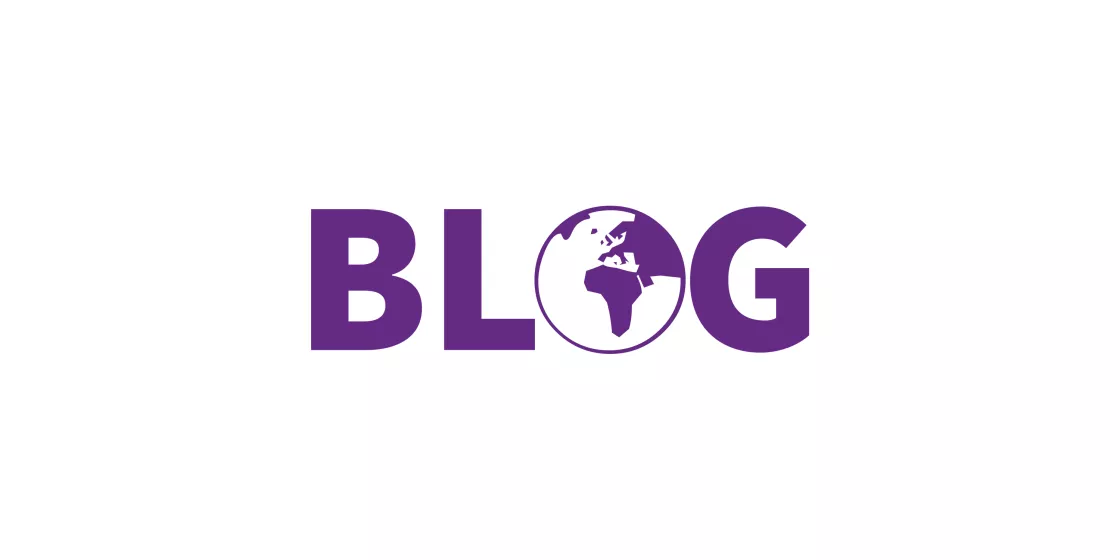A ‘race to the top’ or global crawl? Despite global climate negotiations at COP27 and the G20 inching far too slowly towards the financial transformations we need to tackle climate change, country-level progress is being made. A common framework would help track that progress.
Countries are already adjusting their finance flows in ways that contribute towards the long-term goals of the Paris Agreement. However, we can’t recognise these efforts without a common framework to track that domestic progress at a global level. Indonesia and Germany currently preside over the G20 and G7, respectively. Both countries also share some of the same pioneering efforts to redirect finance flows towards their respective low-emission, climate-resilient development pathways. This experience could inform a global framework to track Paris-alignment and accelerate action towards shared and equitable climate goals.
Two sets of negotiations came to an end last week. At COP27 in Sharm El Sheikh, Parties went into extra time to overcome standoffs over the details of loss & damage financing, the delivery of $100 billion in climate finance for developing countries, or the doubling of adaptation finance. Across the Red Sea and the Indian Ocean, world leaders met at the G20 Summit in Bali to find common ground on pressing issues such as Russia’s invasion of Ukraine and the ensuing global economic fallout.
No political consensus has emerged over how to tackle climate change from either sets of negotiations. Though an agreement was reached on the creation of a loss & damage fund, global commitments to confront the use of fossil fuels or meet the $100 billion climate finance target for poor countries remain unfulfilled. Globally coordinated climate action is being increasingly threatened by domestic political priorities such as spiralling living costs, energy and food insecurity. But although progress on climate action is grinding to a standstill at multilateral level, individual countries have made slow but steady progress to finance their long-term adaptation and mitigation goals.
Two of the best examples are Indonesia and Germany, who respectively share presidencies of the G7 and G20. Despite having little in common other than the vast size of their economies, they are making remarkably similar strides towards ensuring their finance flows are compatible with their domestic low-emissions, climate-resilient (LECR) development pathways.
However, like all countries they face challenges, and these could be resolved with the help of a simple common framework for measuring and recognising efforts to redirect finance flows across various levers. Unfortunately, no such framework currently exists, and neither was the creation of one considered under Article 2.1(c) of the Paris Agreement included as an agenda item in Egypt last week. Yet, by starting to analyse individual country efforts we can also start to piece together what a common framework would look like.
A global green taxonomy?
One remarkable similarity between Indonesia and Germany’s efforts to track progress on financing their climate transition is their pioneering development of green taxonomies – systems for classifying ‘green’ finance. Over the coming years, these will gradually be made mandatory and help distinguish Paris-aligned finance flows from misaligned ones based on sub-sectors and activities.
Aggregating such national- or regional-level taxonomies would help track global progress. However, international standardisation is not always possible, nor is it desirable. Each country has its own low-emissions, climate-resilient pathways. A common classification would therefore need to be flexible enough for it to be nationally interpreted and applied. For instance, in high-emitting rich countries such as Germany, green finance is far more likely to be focussed on mitigation efforts than in Indonesia, where green finance flows are largely directed towards adaptation. These underlying differences are even more stark if you compare Germany with a country like Belize, which acts as a carbon sink for the rest of the world.
A more practical issue is that at present green taxonomies only exist for a handful of countries, limiting global application. But countries are increasingly interested in developing their own green taxonomies, not just to track domestic progress but to attract international sources of climate finance, especially from private capital currently relying on voluntary (and inconsistent) ESG frameworks. The more green taxonomies are developed, the easier it therefore gets to track not just national but also international climate finance flows.
Rapidly growing global green bond markets
In 2007, the European Investment Bank (EIB) issued the world’s first green (climate awareness) bond, the proceeds of which are channelled towards climate action and environmental sustainability. Germany has since grown to become the world’s second-largest green bond market behind the US.
Indonesia is set to be on a similar growth trajectory, issuing its first green “sukuk” (Shari'ah compliant) bond in 2018 through its national infrastructure development bank PT SMI. The Indonesian green sukuk market is showing signs of exponential growth, with last year’s bond issuance four times oversubscribed.
Like green taxonomies, green bond markets can help crowd-in domestic as well as international climate finance. They are also a useful instrument for steering finance towards sectors that otherwise struggle to attract capital, especially in climate adaptation or resilience, hard-to-abate sectors and conservation. In 2021, 83% of the capital raised from Indonesia’s green sukuks was allocated to projects that helped build resilience or reduce the risk of disasters in highly vulnerable areas and sectors.
The success of Germany and Indonesia’s green bond markets highlights the catalytic role of national and regional development banks in greening finance, not just by issuing green bonds but by realigning their own balance sheets. The EIB is now effectively a ‘green bank’, having channelled over half of its financing towards climate goals and ending any support for fossil fuels, including natural gas. Comparison of these efforts could encourage learning between development banks and other mechanisms for disbursing public funds. For example, Belize’s “blue” bond was issued as part of a debt-for-nature swap with the IMF, allowing the Government to raise capital for marine conservation efforts.
Momentum to shape risk appetites and incentives for green finance
Both the European Central Bank (ECB) and Bank Indonesia (BI) are members of the Network of Central Banks and Supervisors for Greening the Financial System (NGFS). Initiatives such as NGFS - but also the Task Force on Climate-Related Financial Disclosures (TCFD) or the International Sustainability Standards Board (ISSB) - reflect growing recognition of the importance that central banks and financial regulators play in realigning finance flows. As the impacts of climate change pose a greater systemic risk to economies and therefore financial markets, the mandate of these institutions to mitigate those risks will also grow.
The ECB is considerably more active and forward-looking than BI, but that in part also reflects the depth and concentration of the European financial market vis-à-vis Indonesia’s (dominated by just four large commercial banks). The EU’s Sustainable Finance Disclosure Regulation (SFDR) requires financial investors to disclose their exposure to ESG-risks, including climate-related risks. While Indonesia also has disclosure requirements in place, they are restricted to the publication of an annual sustainability report and sustainable finance action plan.
The intention of these disclosure requirements is to steer capital away from carbon-intensive sectors. However, the approaches of financial regulators may be more or less active depending on their historical stance, the structure and depth of the financial system, as well as the financial system’s exposure to climate shocks. It may also be less active where market-led initiatives are already effectively greening finance flows, but this is rarely the case.
Systematic assessments of national-level financial regulations would provide greater understanding of their effectiveness in different contexts. It would also help central banks and other financial regulators to judge when to consider more active punitive or supporting measures, such as differential capital adequacy requirements or interest rates. For example, BI has lowered capital adequacy requirements to accelerate financing of green buildings and electric vehicles.
The need for a common framework to track collective progress
The High Level Expert Group on Climate Finance has outlined we that financial transformations that we need, and highlighted that global negotiations are inching far too slowly towards those needs. However, Germany and Indonesia clearly show that progress is being made at country-level.
Under a common framework, such domestic progress can be assessed collectively under Article 2.1(c) of the agreement. 2.1(c) urges signatory countries to make finance flows consistent with low-emissions and climate-resilient development pathways. The examples of Germany, Indonesia and even Belize show that progress can be assessed collectively by focussing on specific groups of financial policies, regulations or fiscal mechanisms.
A common 2.1(c) framework would not just help track collective progress, but also accelerate global action. First, by documenting and categorising actions a common framework can promote cross-learning between governments, regulators and financial institutions and help them green their finance flows. For instance, Indonesia’s ineffective market-led carbon market could be developed along successful mandatory systems such as the EU’s.
Second, a common framework would highlight pioneering green finance actions such as green taxonomies, green bonds and green finance regulations. Countries that are lagging would thereby be incentivise towards a ‘race to the top’. Operationalising Article 2.1(c) using a common framework could therefore hold the key to achieving a breakthrough in global climate action. Could it therefore play a more prominent role at the next COP?
------------
This blog post has been written by our Sustainable Finance experts David Ryfisch and Christoph Hoffmann along with Joseph Feyertag and Charlene Watson from ODI.
Germanwatch has also published a study on the implementation of the Paris climate target 2.1c in Germany in cooperation with ODI. Given that Article 2.1c has yet to be fully operationalised, this case study examines the progress towards implementing it in Germany. It is a first attempt to provide a comprehensive analysis framework for the implementation of Article 2.1c in Germany.





